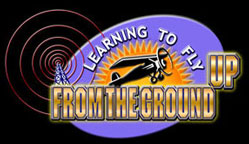I'm not one of those people who always wanted to fly. The heavens never really called for me the way they do to so many people, especially young men. I was not a teen who slept in the hangar at night just to be close to the plane. My view of knowing how to fly was to provide myself with the ability to get from one place to another.Usually the one place was Mendocino, a hundred miles north of San Francisco on the northern California coast, and three hours by car if you didn't hit traffic. There is a mile-long airstrip about three miles from town, and though fog was a frequent visitor, I would likely be able to fly out at some point during the day or night if I had to get somewhere.
Since I hadn't moved yet to Mendocino, nor had the resources to obtain flight instruction, and since it was practicality not passion that was driving this train, the issue was not pressing heavily on my mind. Until, for reasons of marriage, I moved to Redding. Located at the northern end of the Sacramento Valley, Redding is two-and-a-half hours from the nearest cosmopolitan area, which is Sacramento, and at least another hour from San Francisco.
It's isolation is one reason why a lot of people who live in the North State learn how to fly. Also, the commercial service to Redding is limited -- they don't fly jets up here any more -- and often delayed. But Redding is a great place to learn how to fly. Not only because it's out of the way and that means less air traffic, but also because there are mountains on three sides, which helps if you are prone to getting lost.
I worked at a radio station, delivering commentary and interviewing business and civic leaders on my Newsmaker program. Most of my compensation came in the form of commercial time, which I could then sell to businesses not already on the air. One interviewee was the owner of a local FBO, or fixed-base operator. His firm provided airplane charter service, aircraft maintenance, fuel, and flight instruction. Hey, I said, why donāt I give you commercial time and you can teach me to fly.
And not only will I give you the air time, but Iāll write reports on what itās like learning how to fly.
That works, said the man. So I wrote and reported 30 two-minute reports on learning to fly "From the Ground Up". I laid music underneath, and played them twice a day at the same time every day for six weeks. The results were impressive. The company booked charters and signed up new students for flight instruction. Even more important, the owner told me, the series had created an all-important buzz in town, which augured well for his business.
One of the reasons why the series was such a success was because it wasn't trying to sell anything. The reports told how I learned to fly, not only the technical aspect of the lessons, but also described the thought process of assimilating the information, and what it meant on a deeper, spiritual basis. And so it attracted not only people who unlike myself had always dreamed of flying, but it also drew in people who had never thought of flying but suddenly realized its appeal.
Even a year after the series first went off the air, people would talk about what they'd heard. One man said he'd always been afraid of flying, but after listening to me on the radio decided to see if he could learn himself.
The very notion of knowing how to fly has broad appeal -- both for those who will go out and take lessons, as well as those who will appreciate the concept from the ground. There's a certain magic to lifting off the ground into the sky. And it's much more than the risk to life and limb. Rather, by learning to fly, you join a special fraternity of people who have heard a certain call and were up to the challenge.
Learning to fly is not about fulfilling a dream. It's about studying and practicing, and coming to the point of understanding about how a plane flies and when and where the conditions are conducive to a safe flight. It's about gaining the confidence to take off in search of an airport you've never approached by air, knowing that you can skew the plane against a crosswind, and be ready in case the runway lights go out as you are approaching touchdown. It's knowing that the fuel gauges are correct only twice, when they read full and when they ready empty.
John King of the King Schools talks about learning to fly and the "sweated shirt". Anyone who has taken flying lessons knows the feeling of sticking to the seat through your shirt. Part of the process of learning how to fly is meeting fear and moving forward. Maybe that's why when you fly your first solo, your instructor cuts out the back of your shirt.
When you earn your private pilot's license, the wags say you have gotten a license to learn. Indeed; learning to fly is a humbling experience. Beyond all of the work it requires, the time and the concentration, there is also that singular agreement to meet your own mortality. To push the edge of the envelope inside a cockpit of know-how. That's the thrill of flying.
Why I Fly








